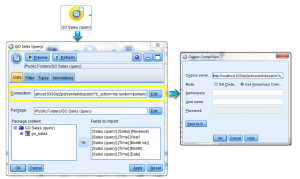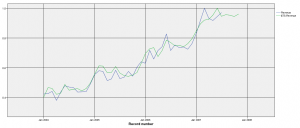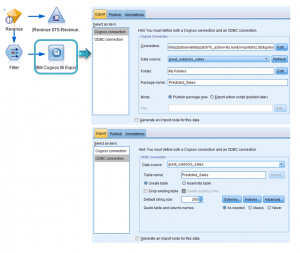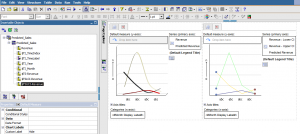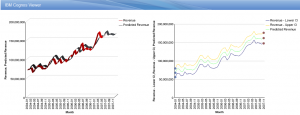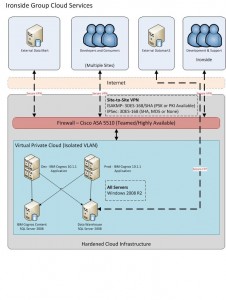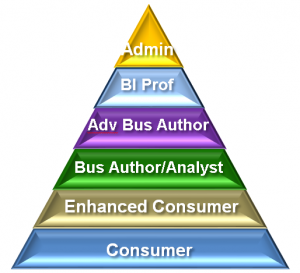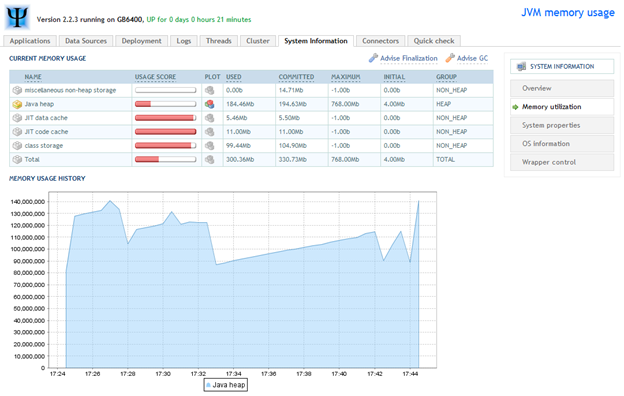IBM SPSS offers a variety of integration options with other enterprise solutions, i.e., enterprise data warehouses, file systems, and business intelligence applications. In this article, we specifically focus on the integration with the IBM Cognos BI environment. As most of you are aware, IBM SPSS leverages the power of predictive analytics by allowing the user to examine the current state of their business, while at the same time providing a view of the future using advanced analytics techniques. With the use of the IBM Cognos BI integration point, the results are immediately available for IBM Cognos reporting, allowing for easy distribution to broad user communities.
In our previous article, we described the general workflow on how to import and export IBM Cognos packages from IBM SPSS Modeler. In this article, we will provide a simple case study using the standard IBM Cognos sample set to further illustrate the above mentioned integration.
Note:
-The integration is only available in IBM SPSS Modeler version 14.1 or higher.
-The supported IBM Cognos environments are version 8.4 and higher.
Providing Data to IBM SPSS from IBM Cognos
The IBM Cognos BI source node enables data miners to read data directly from IBM Cognos Framework Manager, including relational, dimensionally-modeled relational (DMR), and OLAP sourced packages.
In this case study, we select the Go Sales (query) package from IBM Cognos samples and use the following items from the query subject as our source data:
Go Sales (query)
- Sales (query)
- Sales
- Revenue
- Time
- Year
- Month Key
- Month
- Date
- Sales
Before choosing a Framework Manager package to import the data, the user needs to establish a connection to the IBM Cognos server by providing the dispatcher URL and user credentials.
Conduct Data Mining Analysis in IBM SPSS Modeler
The source data we bring in from IBM Cognos contains revenue data for years 2004-2007. The objective of this study is to use advanced modeling techniques to discover trends behind the revenue data and predict future revenues. The following stream in IBM SPSS Modeler uses time series analysis to analyze the patterns in the monthly historical data and project those patterns to determine a range within which future values of the series are likely to fall.
In this example, we extend the forecast of the expected revenue to the next four time periods. The following output from IBM SPSS is a time series graph and shows the predicted (green line) vs. actual (blue line) revenue for each month between Jan, 2004 – Jul, 2007 and the projected revenue for Aug – Nov 2007.
Exporting IBM SPSS Predictive Results into IBM Cognos BI
The end results from an IBM SPSS Modeler stream can be exported back to the IBM Cognos BI environment, including both the transformed and scored data based on predictive modeling. In this case study, we will export the scored dataset of time series analysis into a database table called “Predicted_Sales” and generate an IBM Cognos package on the Cognos server reflecting the new database table.
Once the export is complete, we could use IBM Cognos Report Studio to create a visual report based on the exported data, including the predictions and confidence interval values for consumption by a broad user base.
Through this case study, we showcase how a user can combine the predictive analytic capabilities of IBM SPSS Modeler with business intelligence features of IBM Cognos BI. For any additional questions regarding the integration and its implementation, please contact us at the Ironside Group.

